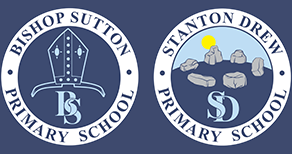Our School
As a very small village school, Stanton Drew has a unique and very special feel. Everyone knows and looks out for each other and it feels like a big extended family. Parents and other family members play a big part in the life of the school and communication and contact between you and the school is frequent and informal. The maximum number of children we could have is 10 per year group, but currently many of the year groups are smaller than this, resulting in smaller class sizes.
We have 3 classes:
Early Years Foundation Stage and Key Stage 1:
Meerkats is made up of Reception, Year 1 and Year 2 so children have 3 years in this class. Both the Early Years and the KS1 curriculum are taught alongside each other and the younger children have the benefit of access to the more formal KS1 curriculum as soon as they are ready. Academic standards and expectations of behaviour are very high and the older children act as very helpful role models for the younger children, who learn and adapt to school life very quickly as a result.
Key Stage 2:
Chinchillas is made up of Years 3 and 4 and Lemurs is made up of Years 5 and 6. KS2 are taught in two separate classes for as much of the week as possible. Currently this is over 90% of teaching time, with the remainder of the week taught as one group (currently 35 children), with one teacher and one teaching assistant. We organise the timetable so that activities more suitable for a larger group are held when the classes are together, and subjects that need smaller groups such as English, Maths, French and Science are taught when they are split into two classes.
The school is a safe, comfortable, nurturing environment where adults and children work closely together and share many enjoyable events and activities through the year. At the same time, academic standards are high, the work is rigorous and we expect high levels of effort in children’s work and encourage them to take responsibility for their own learning.
